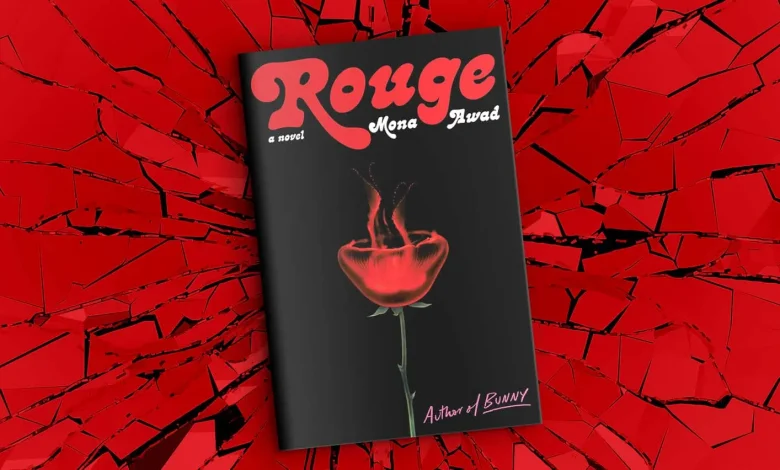The Ritual of Daughters and Mothers: A Review of Mona Awad’s Rouge

Haley Clough ‘26 / Emertaiment Monthly Head Music Editor
Mona Awad’s claim to fame comes from her keen ability to write “broody girl,” novels. Bitten down nails, blood red lipstick, gloomy skies, girls sexy and damaged and a little bit unhinged. But in Awad’s Rouge, released in early September, her revered broody girl is no longer.
Instead, we have Mirabelle, a young woman processing the death of her mother, grieving a tumultuous childhood and unanswered questions. Mirabelle, or Belle, is not all that broody or disturbed or romantically damaged, but is more a woman of our own hearts. Belle is a woman experiencing the commodification of her beauty, mourning the loss of her mother and the inherent pain of womanhood.
Through Mirabelle’s reflections of her adolescence, she observes the unique relationship of mothers and daughters. The way the cycle of self-ridicule is passed from mothers to daughters. Belle’s obsession with beautification, skincare, and other women is a testament to Awad’s keen ability to find poignant commentary in the seemingly mundane.
As she grieves, Belle becomes more entrenched in this world that was once her mother’s, a world of neurotic spa treatments and hellish skincare, in an attempt to gain control and maintain any semblance of connection to her mother: through the ritual of self-ridicule. Masterfully interwoven with fantastical realism, Belle experiences the very real journey of a woman grappling with the mortal body’s aging, and the implication of this in a society that reveres a woman’s beauty before much else.
Is Rouge a fantastical story of a woman processing loss, or would it be better described as the universal experience of grieving an aging body meant to be observed?
The novel’s opening lines establish the unsettling whimsy and fantasy Awad crafts so well, a scene reflecting on a time where Belle’s mother would tell her a bedtime story, the same story, over and over again. A bedtime proclivity. Jump to Belle’s adulthood, and every waking moment is defined by ritual.
Belle soon becomes immersed in a world of people cultishly devoted to beauty at La Maison de Méduse spa, willing to become beautiful through destruction of the self and the mind, worshipful of self destruction. Though timid at first, Belle is soon swept up in the violence of these beautification practices too. The more beautiful she becomes, though, the less of herself she has, and the more questions she has of her mother’s untimely death.
Is Belle’s experience not the basis of womanhood? Is this not the risk you run in a society intent on commodifying beauty? The depiction of the internal battle of the self is unsettling, not only through the fantastical realism with which Rouge is written, but because of the poignant way Awad writes of mourning a body reduced to an object.
One need not be privy to Awad’s other works to retain the symbolisms of Rouge. As an author, Awad has a habit of illogically fantastical stories with realistic symbolic meanings, but this piece diverts from Awad’s typical style of dark, ambiguously-concluded novels. Mirabelle’s ending is not one of suffering. Her fate is not sealed and intertwined with the cult of beauty, not forever subject to the ritual passed on from mother to daughter.
A must read for lovers of strangely placed Tom Cruise references and rose scented description, Awad has created a bizarrely perfect commentary in Rouge.